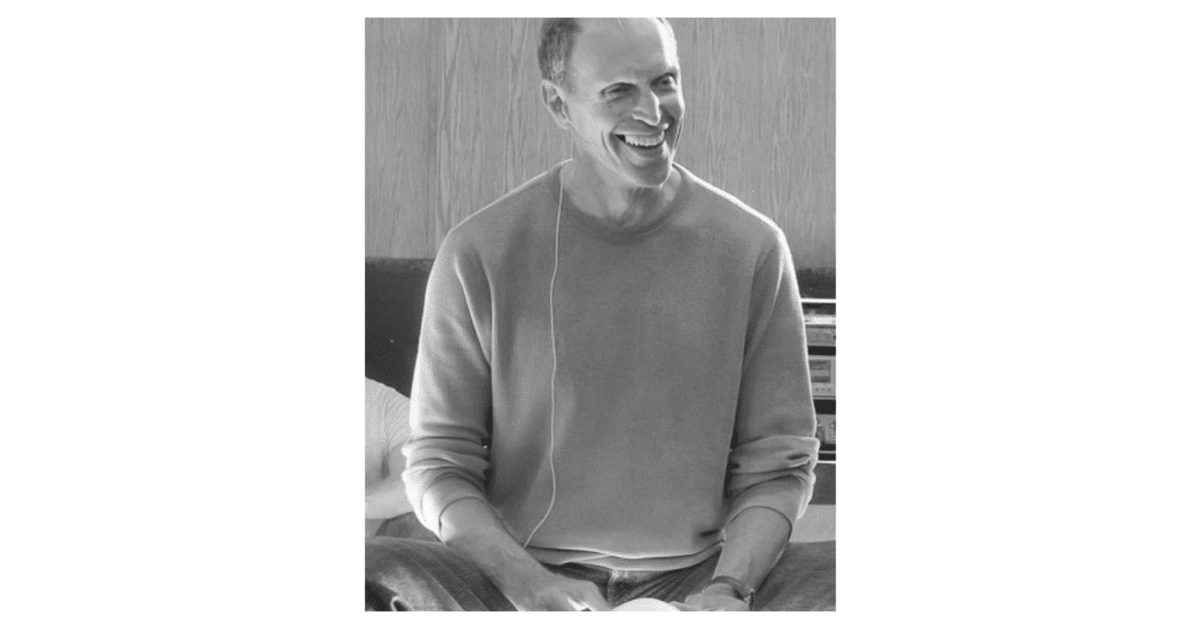
-"今、ここ"から始まる意識の可能性- ジェフ・ハラーさん
2021/5/8に、アメリカ・シアトルからジェフハラーさんを迎えてオンラインWSを開催するにあたって、JFCメンバーみんなでWSへ向けてのお話を伺いました。
---JFC: What made you start the Feldenkrais Method?フェルデンクライスをはじめたきっかけはなんですか?
Jeff: When I was in University in 1972, one of my professors was in the speech department, and he had an interest in Feldenkrais. He’d heard about him. Dr. Moshe Feldenkrais had taught classes at a place called Esalen Institute. So Feldenkrais gave a workshop in Portland, Oregon that this professor went to, and he came back to this speech class, and he started to show us some Awareness Through Movement. We were doing “separating the eyes and the head,” and making movements with the chest. It was only 10 minutes but I had a completely profound experience. There was more implicit intelligence in those 10 minutes than in all of my years playing basketball, when I was a university basketball player. Basketball was all effort, motor skills training, rote, practice. Here was a situation that was novel that really required me to pay attention to what I was doing, so that I could make the differentiations. So it profoundly impacted me, and right after that Moshe’s book Awareness Through Movement came out. And the book was like reading poetry to me, it was like coming home. And yet there wasn’t anything I could do about it until around 1980.
I went and got a Master’s degree, I worked as a teacher. I wasn’t in the US when Moshe started his San Francisco training, so I missed that opportunity. When I went down to San Francisco in 1977, I was so disappointed to find out that he had been teaching a training that was about to graduate. The word on the street was that this was going to be his last training. But a man named Jerry Karzen talked him into having another training that was going to start in 1980. So I was fortunate enough to be in that training.
ジェフ:1972年に大学に通っていた時に、僕のいたスピーチの学科の先生のうちの1人が、以前からフェルデンクライスに興味を持っていてね。当時、モーシェ・フェルデンクライス博士はエサレン研究所[1]という場所でレッスンを教えていたのだけど、オレゴン州のポートランドでもワークショップを開催して、それに僕の先生が参加をして、後に僕たちのスピーチのクラスに戻ってきた際に、Awareness Throgh Movement[2](動きを通しての気づき)をやってみせてくれたんだ。そのレッスンは、目と頭の動きを分化して、胸部を一緒に動かしていくもので。たった10分くらいのレッスンだったけれど、僕にとっては心底揺さぶられるようなものだった。大学時代はバスケットボールに打ち込んで、何年もバスケットボールをやってきたけれど、あの10分間のほうがよっぽど絶対的な知性が詰まっていたように思うよ。バスケットボールは努力することが全てで、運動技術のトレーニング、鍛錬の繰り返しだけれども。フェルデンクライスでは、自分が一体何をやっているのかということに注意を向けることを課せられたし、そうすることで違いを見つけていくことをも可能にしたんだ。だから僕にとってはとても衝撃的でインパクトがあった、ちょうどその直後にモーシェの本、 Awareness Through Movement が出版されて、僕にとってこの本はまるで詩集を読むような感覚で、それはホームに帰ったようだったよ。でも1980年頃になるまで、僕は特に何もできなかったんだ。そのまま修士過程を修了して、教員として働いた。モーシェがサンフランシスコでトレーニングコースを始めた時には、僕はアメリカにいなかったし、チャンスを逃してしまったんだ。1977年にサンフランシスコへは行ったけれど、彼のトレーニングコースはもう時期的に終わる過程だということを知ってとても落ち込んだよ。噂では、これがもう最後のトレーニングコースだと聞いていたのでね。でもジェリー・カーゼン[3]という人が、1980年から新たなトレーニングを始めるよう博士に促したんだ。そして、幸いにも僕はそのトレーニングに参加することができたというわけ。
---JFC: What are the benefits of the Feldenkrais Method and how has it changed your everyday life? フェルデンクライスメソッドからどんな恩恵を受けていますか?そしてそれがどのように日常に変化を与えましたか?
Jeff: The primary benefit for me with the Feldenkrais Method is that I was able to separate from myself, to change my identification with what was my history before the method. So I was able to see the conditioning forces that created me, that I was identified with before I became a practitioner. And in the work I was able to find another paradigm for myself. And I say it very simply, but my first paradigm was based on what I could produce. And Moshe introduced me to another paradigm. So instead of being identified with what I could produce as a sense of well-being, he introduced me to the idea of how I could learn to care for myself. It took me years to grasp what it was he was actually teaching me. But the seeds were planted and they germinated and began to grow. So over the years I was able to develop a profound sense of my own autonomy, that was separate from being a part of my history. Somehow a sense of being rather than a sense of doing. Moshe’s greatest gift for me was that I learned how to pay attention to the moment “now,”, and the ability to discriminate my thoughts, my feelings, discriminate in the world of sensation, and my capacity to initiate action. And so out of not being bound by my habits, I have a lot of space for spontaneity and imagination, and having something arise and appear in the moment that’s magical. I say it's a very good Functional Integration lesson if both people arrive at a place that they’ve never been before. Something unique and new arises for the practitioner that’s absolutely new, every single session. Without that it’s just some kind of performance, some prescription, some form of doing in order to get a result. It’s something different to be there for the result that appears. This was very much a part of what Moshe was working with us to discover when we were studying with him.
僕にとってフェルデンクライスメソッドから受けた恩恵は、自身を客観的に見られるようになったこと、プラクティショナーになる前は、自分は過去からの積み重ねで構成されていると思っていたけれど、このワークを通して他の在り方というものを見つけたんだ。当初の在り方というのは、それはとてもシンプルに、自分というのは自分が生み出す何かが基盤となってた。そして、モーシェは僕に他の在り方を教えてくれて、それは自身のウェルビーイングのためににどんな結果を生み出すかではなく、自分自身をどのようにケアすることを学ぶかということだった。彼が伝えたいことを理解するのに何年も要したけれど、でもそれは種が撒かれるように、ゆっくりと目が出て成長していったよ。だから何年もかけて僕は自分の歩んできた道から自分自身を切り離して、深く自己の自立性というものを発達させて来ることができたんだと思う。何かするということではなく、ただそこに在るということ。モーシェからもらった最も大事なギフトは、どのようにして「今」この瞬間に注意を向けることかを学んだこと、思考と感情の違いを見出すこと、さらに感覚、そこからアクションを起こす自身の能力について。習慣的な何かに囚われることなく、たくさんの自発性やイマジネーションが持てる余白を持ちながら、それははまるでマジックが起こる瞬間に沸き起こる何かを持ち合わせているような。いいFIレッスン[4]いうのは、2人が未だかつて行ったことない場所に2人でいくことなんだ。ユニークで真新しい何かがプラクティショナーの中で沸き起こること、絶対的に新しいこと、毎回のセッションでね。それがなければ、それはただのパフォーマンスのようなものだし、何かの結果を得るためだけの処方になってしまう。本当の結果をもたらすためには、何か違うものがそこに在らなければならないんだ。そして、それがモーシェのもとで学んでいた際に、主に彼が僕たちに発見させようとしたことだったと思うよ。
---JFC: Please tell us your future goals and plans, and if you have a message for the Japanese audience. 日本のオーディエンスへ向けて、これからのゴールやプランをお聞かせください。
I would like to take this work into the world more as a transformational process, rather than as a physical therapy process. I would like to help people transcend the grief of their past, by dissolving the habitual muscular habits in such a way that people can open themselves to really being alert in the present moment. I think this work is extremely profound and suited to be seen in that light.
僕はこのワークを理学療法的なアプローチというよりも、一種の変容のプロセスとして世界に伝えていきたい。人々が今この瞬間に気づいて目覚めている状態になれるように、習慣的な筋肉の癖を解いていくことで、自分自身の過去の深い悲しみを越えていく手助けがしたい。そういった点において、大いに向いているワークだと僕は信じているよ。
--
注釈:
[1]エサレン研究所
1972年エサレン研究所にてモーシェ・フェルデンクライスは5週間半のワークショップを指導した。“Esalen Workshop”この修了者はフェルデンクライスのグループレッスンである、Awareness Through Movement(A T M)を指導する資格が与えられた。
[2]Awareness Through Movement
フェルデンクライスのグループレッスン。主に言葉で指導する。
[3]ジェリー・カーゼンJerry Karzen
フェルデンクライストレーナー。1977年、モーシェ・フェルデンクライス博士のサンフランシスコ・トレーニングを卒業。その後、イスラエル、アメリカでフェルデンクライスから学ぶ。晩年のフェルデンクライスの秘書であり、親友であった。フェルデンクライスが直接に教えた最後のトレーニングとなったアムハースト・トレーニングをオーガナイズ。
[4]Functional Integration レッスン
フェルデンクライスの個人レッスン。主に手によるタッチでプラクティショナーとクライアントがコミュニケーションを図る。
--
フェルデンクライス オンラインワークショップ
“THINK OUTSIDE THE BOX vol.2” by Jeff Haller
日時:5月8日(土)10:00−13:00
参加費:7,000円(日英通訳あり、レッスンデータ込み)
テーマ:「“座る”ことの機能の探索」
お申し込み詳細はこちらからご覧ください。

ジェフ・ハラー
1983年にモシェ・フェルデンクライス が指導した最後の養成コースであるアマーストでのプログラムを修了し、フェルデンクライス プラクティショナーとなる。 自身の活動を「Inside Moves」と名付け、シアトルを拠点に精力的に活動を広げていく。 1993年以降アドバンストレーニング等のプラクティショナー向けの指導に注力する。 現在は自身が教育ディレクターを務める養成コースにて、これまでのプログラムをアップデートさせた形での新たな試みに取り組んでいる。 HP:https://www.insidemoves.org/Home
この記事が気に入ったらサポートをしてみませんか?
